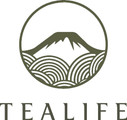The Ultimate Guide to
Kabuse-cha [2022]
The hybrid tea of the Sencha and the Gyokuro.
Introduction - What is Kabuse-cha?
Now let’s look into the world of Kabuse-cha.
Kabuse-cha is somewhat of a hybrid between the Sencha and the Gyokuro tea. You add them together and divide by two... and that will essentially give you Kabuse-cha.
It is an extremely unique and enjoyable type of tea, as you can relish both the rich umami and aroma similar to that of Gyokuro, and also the pleasurable astringent and fresh features of the Sencha.
Perhaps in that sense, this drink is for somewhat advanced Japanese tea drinkers.

So, how does Kabuse-cha develop this unique taste?
Kabuse-cha is produced in a similar way to Gyokuro in that the leaves are shaded from the sun prior to harvesting. However, the amount of shading is only roughly a week to ten days... or even shorter, which is considerably less than the 20 days required to produce Gyokuro.
This allows some of the astringent and bitter tastes to develop within the tea leaves in a way that a Sencha does, but also allows a lot of the Umami to remain in a way that the Gyokuro does.
Kabuse-cha is considered a relatively high grade of Japanese tea, as this cultivation method is relatively difficult compared to Sencha.
Therefore, it's relatively expensive.
It may not be your “Everyday Japanese Tea”, but it definitely is a nice cup to have once in a while, or something interesting to enjoy with guests.
The Taste of Kabuse-cha

A cup of Kabuse-cha
What does the Kabuse-cha taste like?
Well, you actually have two options when it comes to tasting Kabuse-cha. Depending on how you prepare the tea, you can enjoy it more like a Sencha or more like Gyokuro.
- If it is infused at a relatively low temperature, it will contain the bitter and astringent tastes from coming out. This way, you can enjoy the umami and sweetness similar to that of Gyokuro.
Many Kabuse-cha also have “ooika”, which is a unique scent characterised in Gyokuro. "Ooika" is a rich smell generated by shading the tea leaves with straw and reed. However, the "ooika" in Kabuse-cha is a little different because it adds a little more freshness compared to that of Gyokuro.
- If infused at a higher temperature, the astringent and bitter tastes will be highlighted. You can enjoy these pleasant tastes the way you would in sencha.
The versatility of the tea is one of the reasons it is so fun to try.
The Health Benefits
- Because the Kabuse-cha is shaded before harvest, it will not allow the Theanine to turn into Catechin as much as Sencha would.
- The shading also increases the levels of caffeine, hence it is a good cup to boost your performance before sports or study.
Why is it called Kabuse-cha? (The origin of the name)
(The origin of the name)
Kabuse in Japanese means "covering". Therefore, kabuse-cha literally means tea which is covered.
This is directly referring to the cultivation method of Kabuse-cha, where the leaves are covered and shaded from the sun. In Japanese, it is written as either one of the below.

How to make Kabuse-cha
When infusing Kabuse-cha, aim for something between a Sencha and a Gyokuro.
Keep the amount of tea leaves and water temperature closer to that of a Sencha if you want to enjoy the astringent components of the tea. If you want to taste the Umami, keep those parameters closer to a Gyokuro.
The following instructions are a good place to start. And remember to experiment and enjoy, as each tea is different!
Kabuse-cha (Enjoy Umami) | Kabuse-cha (Enjoy Astringency) |
Servings | 2 servings | 2 servings |
Water (mL) | 200 ml | 200 ml |
Leaves (g) | 8g | 8g |
Leaves (roughly in teaspoons) | 4 tsp | 4 tsp |
Temperature (Celsius) | 60° | 80° |
Brewing time (Seconds) | 120 seconds | 60 seconds |
How to make Kabuse-cha
water temperature
water hardness
Soft water with a hardness of between 30 to 80 is said to be the best for extracting the taste and aroma of green tea. The tap water in Singapore is "moderately soft", which makes it perfect for Japanese Tea.

Famous areas producing Kabuse-cha
Summary

